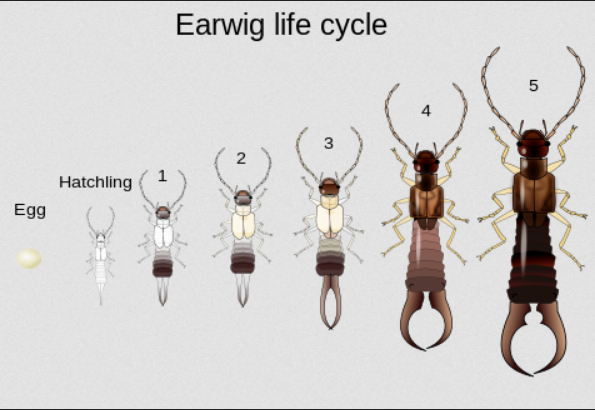Title photo by Mick Talbot
The Common Earwig belongs to the order Dermaptera, which is Greek for ‘skin wings’, The name ‘Earwig’ comes from the Old English words for ‘Ear Beetle’. Entomologists believe the origins for the name refer to their wings, which look like an ear when unfolded. The species name ‘auricularia’ is a specific reference to this, and ‘Forficula’ comes from a Latin word for ‘little shears’ or ‘scissors’.
Despite their wings being fully developed, they are weak and rarely used, if they are found in the home on walls or on the ceiling they prefer to drop to the floor and scurry away
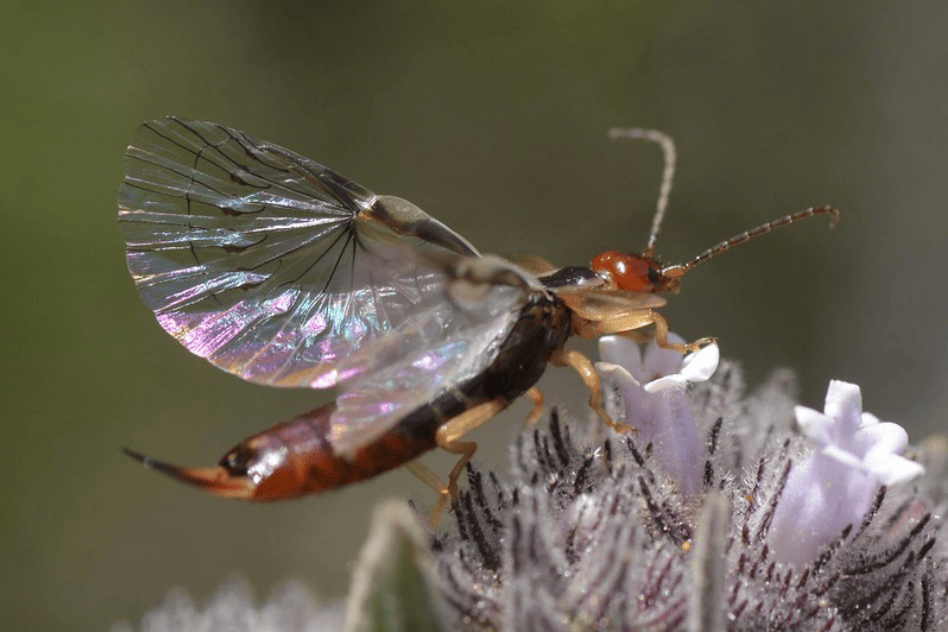
Above, photo by Marc Kummel
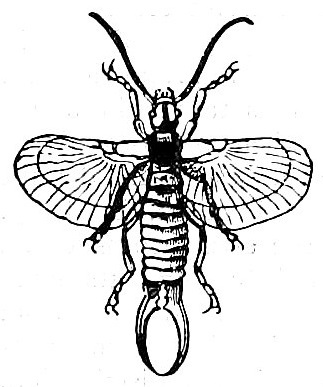
Above, Illustration of common earwig with wings extended. Source
Earwigs don’t purposefully climb into human ears, although there are anecdotal reports of the occasional earwig being found there. They certainly do not lay their eggs in human brains, and the old wives’ tale is just superstitious nonsense
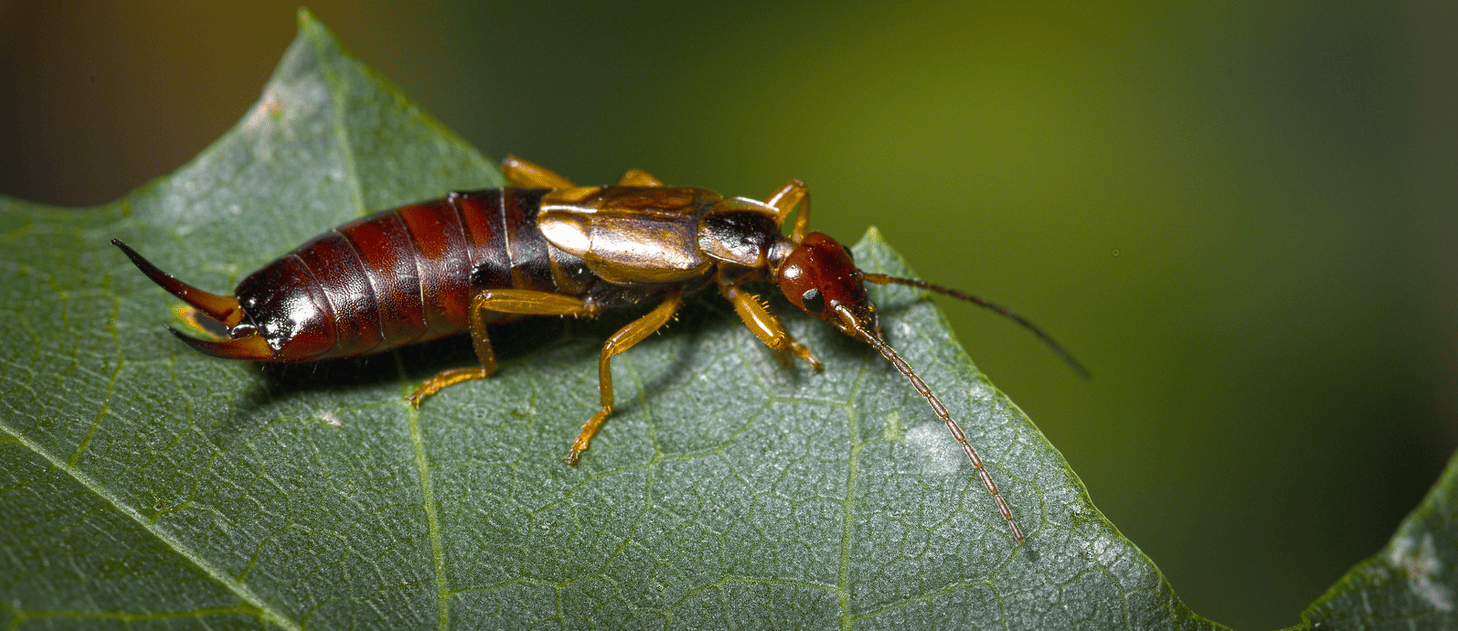
Above photo by hedera.baltica
The Common Earwig is found throughout Europe and Britain, it has also been introduced to North America, and accidentally to New Zealand. They prefer cool, moist habitats, and are mainly active at night. During the day they hide in inaccessible places like flowers, fruits, wood crevices
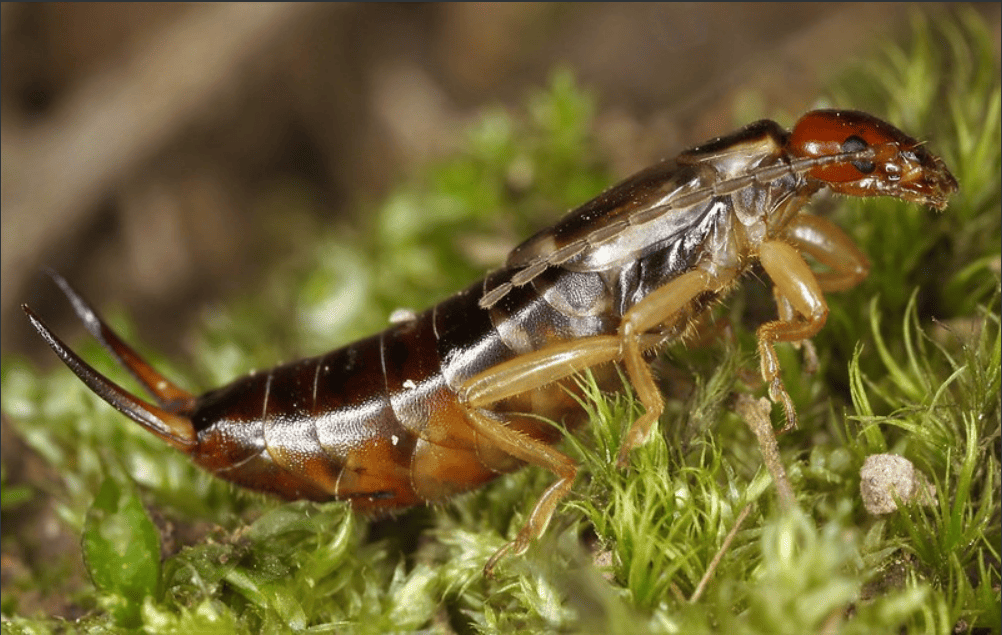
Above, photo by Christian HUGUES
They are omnivores, but rarely hunt for prey, referring to scavenger instead. Their diets include plant matter (their favourites being Hedge Mustard, White Clover and Dahlias) and small insects including aphids, spiders, insect eggs
They have elongated, flattened brownish coloured bodies, and are approximately 12-15mm long. Both sexes have forceps like cerci (forceps- paired appendages on the rear of many arthropods). The males cerci are large, robust and curved, whereas the females are slender and straighter. The cerci are used in courtship displays, as tactile stimulus for the females during mating, as well as for feeding and self defense.
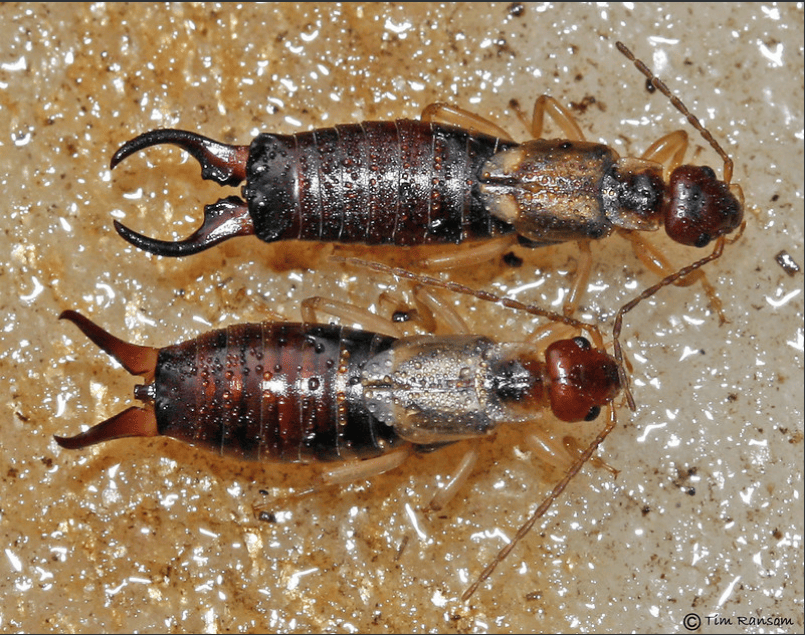
Above, photo of male and female by Tim Ransom
Both F. auricularia males and females take an active role during courtship. The males starts to display by bobbing or waving his cerci. If the female is receptive, both the male and female will progress to tactile stimulation, with the males using their cerci to encircle the female. It’s worth noting that the males do not aggressively use their cerci to hold the female in place during mating.
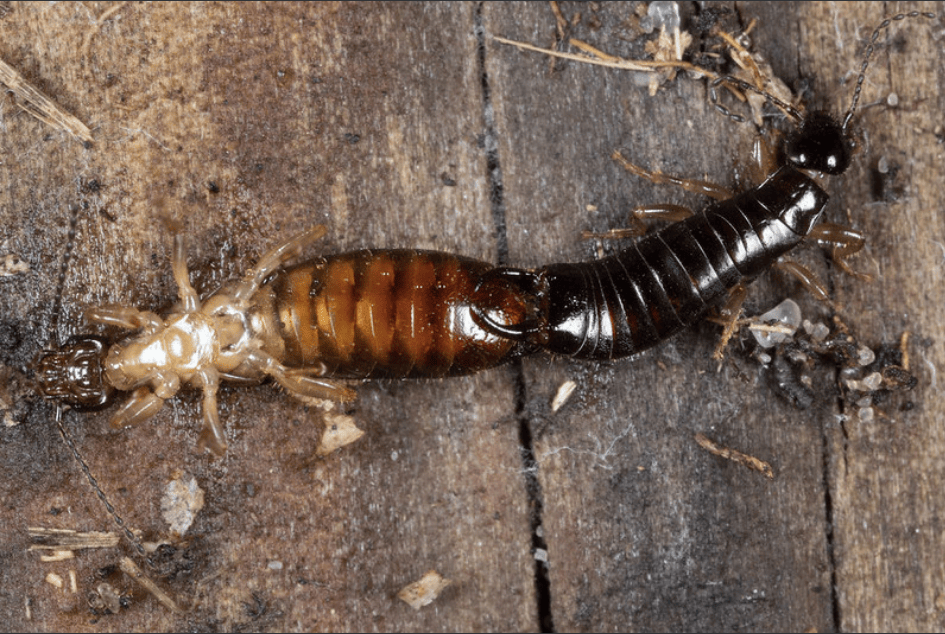
Above, photo by zosterops
Courtship continues with abdomen arching, bobbing and twisting, before mating occurs. Male cerci are necessary for mating, and those whose cerci were removed were unable to find a mate In order to mate the male and female face opposite directions, with the males cerci under the tip of the females abdomen. If undisturbed the mating pair can remain joined for many hours, with the female often moving around to feed.
F. auricularia will look after both her eggs and provide additional care to her young and rarely feeds during this time. The female lays around 50 eggs in a small underground nest, 5mm below ground during Autumn. Entering a dormant state she stays with them throughout Winter. She cares for her eggs by cleaning them with her mouth and cerci, removing pathogens and fungi. She will defend her nest fiercely and relocate her eggs to a safer place if necessary
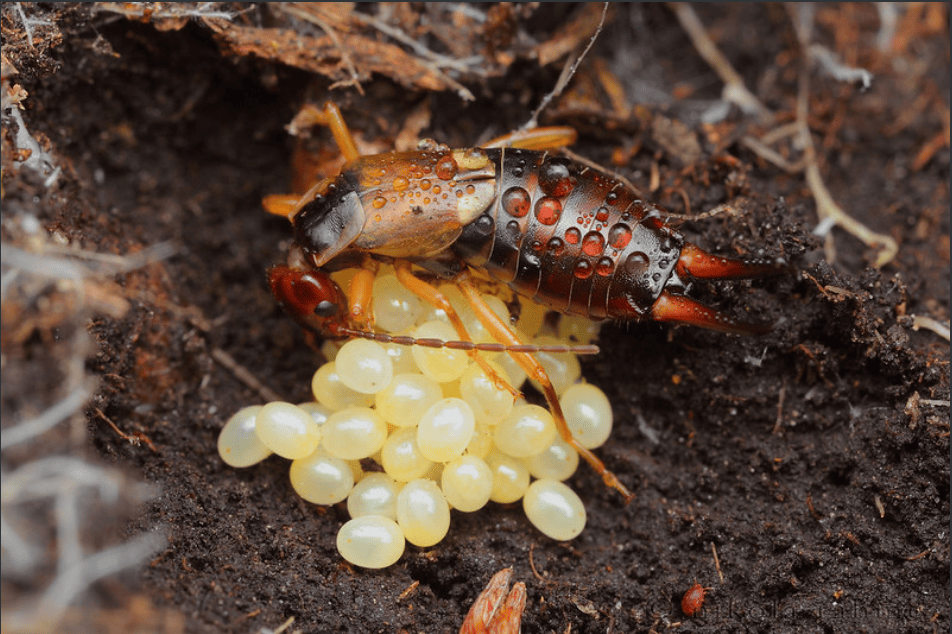
Above, photo by Nikola Rahmé
In Spring the young hatch, and their mother continues to care and protect them. She will groom, provide food and even regulate the temperature of their nest. As they grow from larvae to first instar stage they are also taken by her on night time foraging excursions. She continues to guard them until they are around one month old and have reached maturity
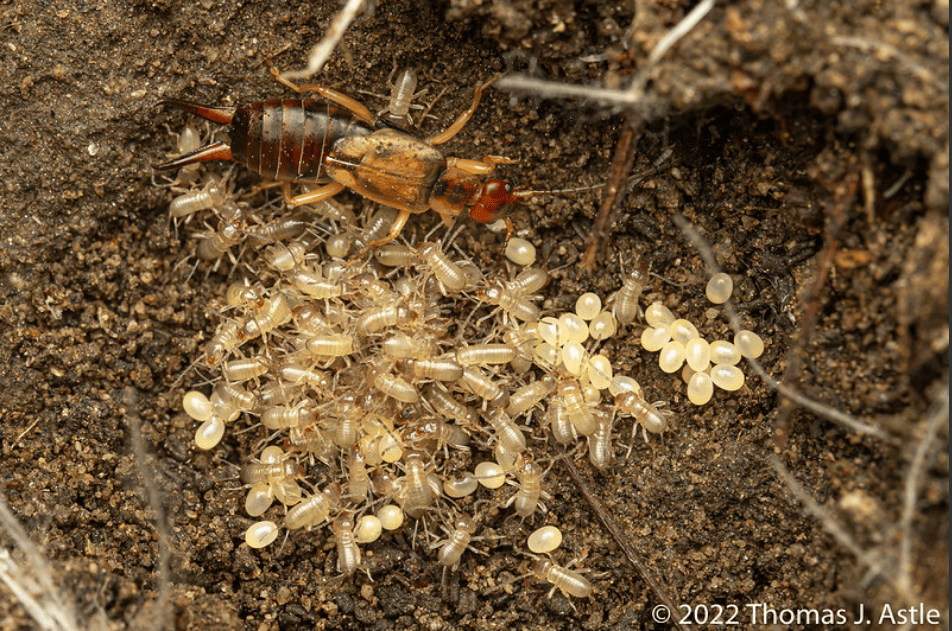
Above, photo by Thomas J Astle
Common Earwigs also demonstrate altruistic behaviour by accepting foreign offspring and eggs and providing the same level of care as they do their own. It is not the case that they don’t recognise the difference between their own and another’s, as each mother regularly applies an aromatic chemical to her eggs and this chemical is family specific
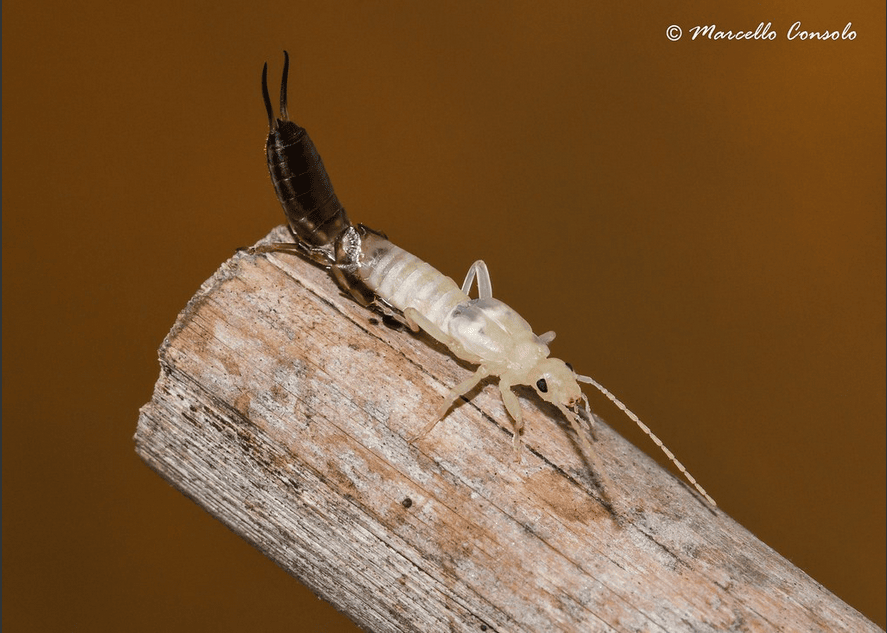
Above, a molting earwig, by Marcello Consolo
Both male and female Common Earwigs produce pheromones, which help them to find suitable group shelters to hide in during the day. These group shelters can be as many as 50-100 individuals per square meters which can encourage fungi, bacteria and also attract predators. It has been observed that having some feces in the nest site as it can have pathogen inhibiting properties, and feces eating can help with the transfer of gut bacteria and help if food is scarce
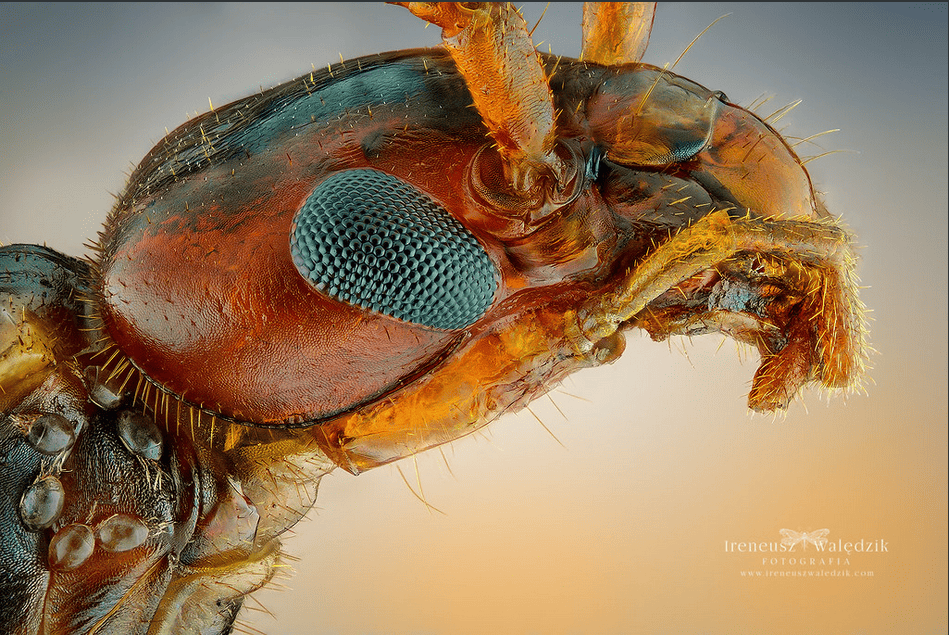
Above, photo by Ireneusz Irass Walędzik
All information from here, here and here
As always my disclaimer- I am not an expert, I just like finding and sharing interesting things. Any errors please leave a comment and I’ll edit my post. Cheers!
Reaction 1: They have wings? They can FLY?
Reaction 2: Oh good, their name comes from the wing shape, not from laying eggs in my ear.
What a great post about these lovely and complicated but misunderstood little beauties. Their social behavior is so interesting!
I don’t know why these always gave me the heebie jeebies. They are so cool though!
Haven’t seen these around in a while! I used to find these in cereal boxes when I was in Maine, always had to check the bowl before you poured the milk.
Very interesting to read more about them. Thanks for sharing!
We get quite a few of them in the UK, even now
I just remembered when I was little, in one of my summer dens pulling a cloth from a plank of wood, and having what seemed like hundreds of them scurrying out…I think I may have shit myself!
Entomologists believe the origins for the name refer to their wings, which look like an ear when unfolded
oh thank fuck those things have always scared me because I’m like “What does it want with my ears im using those”
A&E would be full of people with bugs in their ears if that was the case…we’d all be wearing earplugs in bed…
…now brain eating amoebas and leeches on the other other hand… 😱

